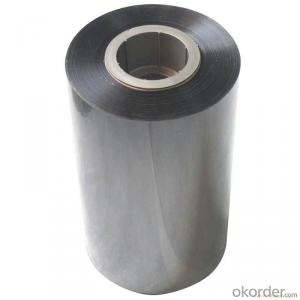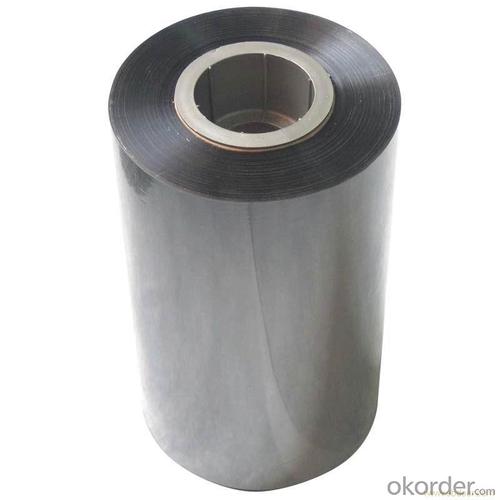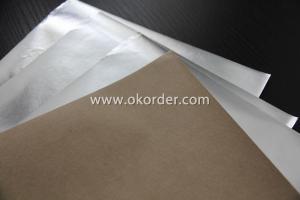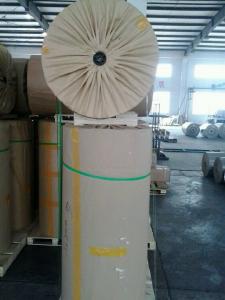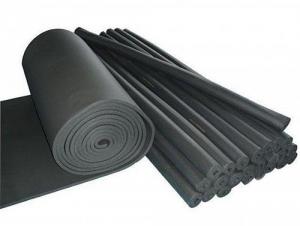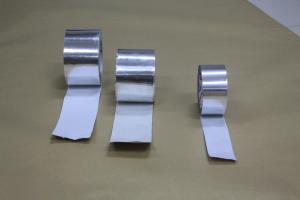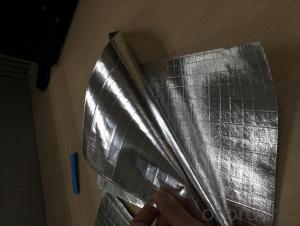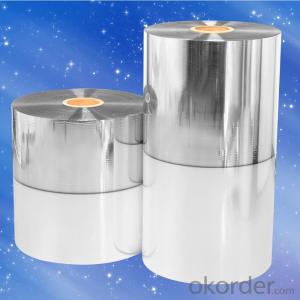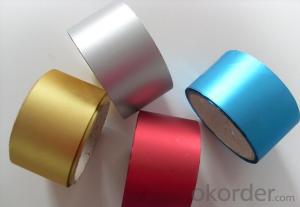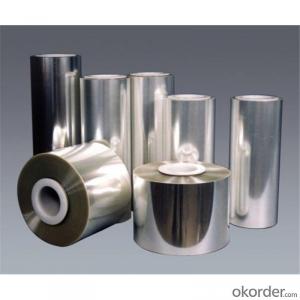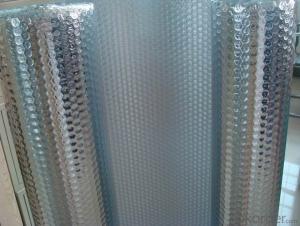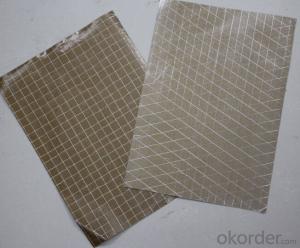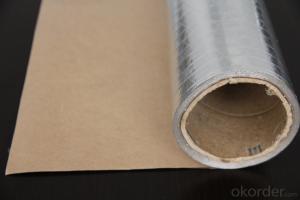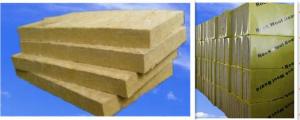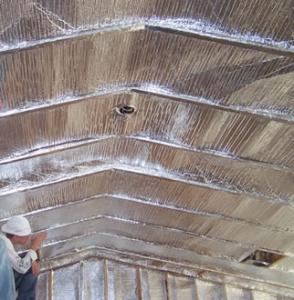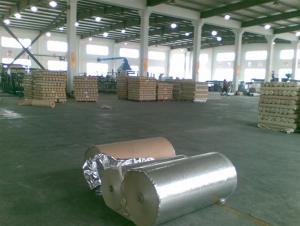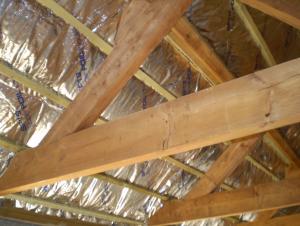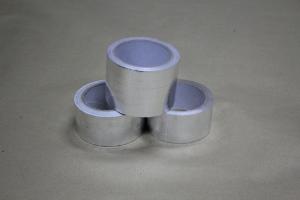Aluminum Foil Facing Metalized PET/LDPE Laminated Polyester for Flexible Duct
- Loading Port:
- Shanghai
- Payment Terms:
- TT OR LC
- Min Order Qty:
- 10000 m²
- Supply Capability:
- 5000000 m²/month
OKorder Service Pledge
OKorder Financial Service
You Might Also Like
Specification
Product Structure
Widely used for laminating with EPE insulation, Bubble insulation, woven fabric insulation, etc
● Aluminum foil – LDPE
● Aluminum foil- PET- LDPE
● Clear Transparent PET-Aluminum foil – LDPE
● Aluminum foil-Metallized PET- LDPE
● Metallized PET- LDPE
Product Application
Widely used for laminating with EPE insulation, Bubble insulation, woven fabric insulation, etc
Product Advantage
Light weight
• High manufacturing accuracy
• High strength
• Small inertia resistance
• Strong heat dissipation ability
• Good visual effect
• High reflective insulation
• Heat resistant, water proof, stable at high temperature;
• Environmentally friendly, no smell and not-toxic;
• Smooth and clear surface;
Product Packing
1. Waterproof paper then PVC shrinking Film
2. Kraft paper only
3. Woven cloth
4. Kraft paper or Water Proof Film then Metal/wooden pallet
5. (Also as your request. )
Product Remarks
1. The data above are typical results and subject to change without notice.
2. Tolerance: Weight and Thickness: ±10%; Width: ±3mm;
Length: Cut Roll & Log Roll ±0.3m, Jumbo Roll ±0.5%.
3. The products should be stored at room temperature and kept from wet and heat source.
4. It is essential, as with all pressure-sensitive tapes, that the surface to which the tape is applied must be clean, dry, and free of grease and oil.
5. The user should take test and do trial-application on the above products before coming into application so as to witness and ensure suitability for user’s special purpose and technique.
Product Data Sheet
PROPERTIES | UNIT | VALUE | TEST METHOD |
Basic weight | gsm | 33.5 | ASTM D646 |
Thickness | mic | 23.2 | ASTM D646 |
Tensile strength: M. D. X. D. | N/15mm | 13.5 13.5 | ASTM D882 |
Delaminating Values | N/15mm | 1.5 | ASTM D904 |
Reflectivity of foil surface | % | 95 | ---------- |
Temp. Resistance | -40°C 130°C | No Delamination No Delamination | ASTM C1263 |
Water vapor permanence | ng/N.s | 1.15 | ASTM E-96 |
Product Picture
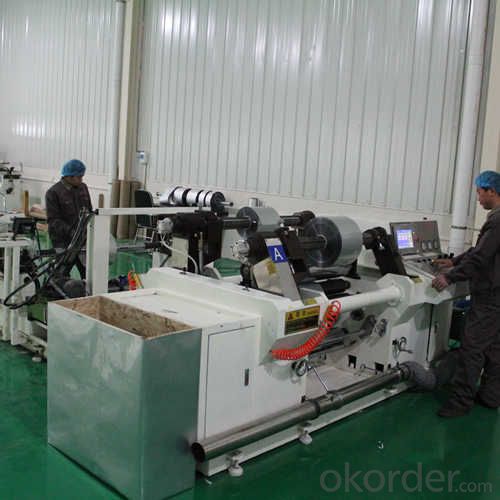
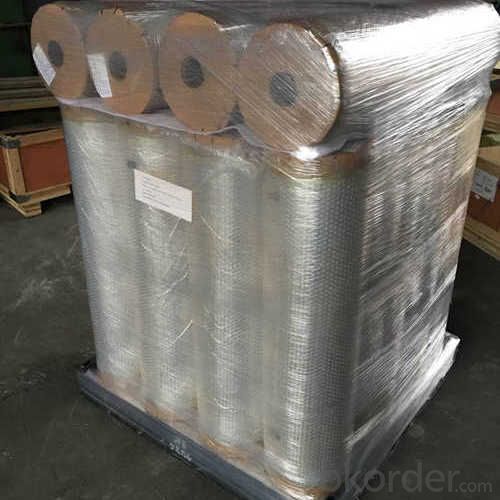
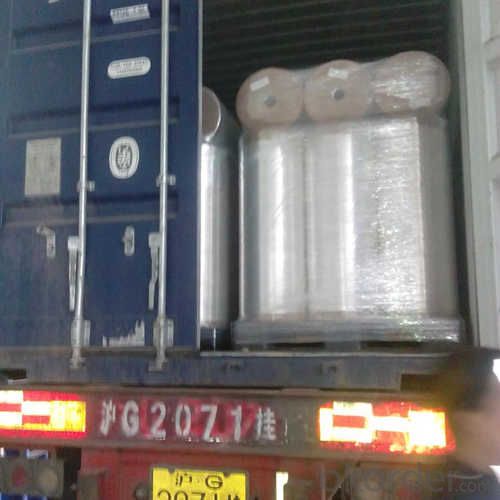
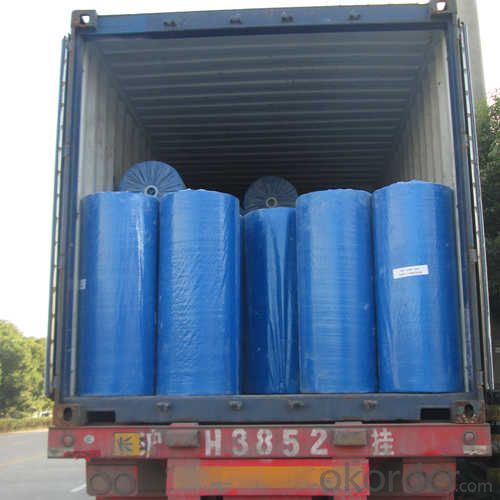
FAQ
1. What is the product keeping conditions?
The Aluminum Foil Facing should be stored at room temperature and kept from wet and heat source.
2. What is the guarantee years of the products?
We have established the international advanced quality management system,every link from raw material to final product we have strict quality test;We resolutely put an end to unqualified products flowing into the market. At the same time, we will provide necessary follow-up service assurance.
3. What is the delivery time of the order?
In the purchase of product within four working days, we will arrange the factory delivery as soon as possible. The specific time of receiving is related to the state and position of customers. Commonly 7 to 10 working days can be served.
- Q: What are the methods to prevent grease stains on aluminum foil after using it for cooking?
- <p>To avoid grease stains on your aluminum foil facing after cooking, consider the following tips: Use a double layer of foil to increase protection, ensuring the foil is large enough to fully cover the cooking surface. Preheat your foil before placing it on the cooking surface to reduce the chance of grease sticking. Clean the foil immediately after use with warm soapy water to remove any grease before it sets. Alternatively, you can use non-stick spray or a light coating of oil on the foil before using it, which can help prevent grease from adhering.</p>
- Q: This question asks for the most suitable materials to be used in conjunction with aluminum foil facing.
- <p>The best materials to use with aluminum foil facing are those that are compatible with its properties. For insulation, materials like fiberglass or polyethylene foam are ideal due to their thermal resistance. For construction, materials such as plywood or drywall can be used as a backing, as they provide a sturdy base. When it comes to sealing, materials like butyl rubber or silicone are effective because they adhere well to aluminum foil and create a watertight seal. It's crucial to select materials that won't react chemically with aluminum and can withstand the environmental conditions in which the foil facing will be used.</p>
- Q: Is it safe and effective to use aluminum foil with a reflective side for baking purposes?
- <p>Yes, aluminum foil facing can be used for baking. The shiny side of aluminum foil is often used to cover baking dishes to prevent food from drying out, to create a steam effect, or to reflect heat for even cooking. However, it's important to avoid direct contact between the foil and the heating elements of the oven to prevent fire hazards. Always follow the manufacturer's guidelines for safe use and placement of aluminum foil in your oven.</p>
- Q: What are the advantages of using food covers made from materials other than traditional ones, specifically regarding health benefits?
- <p>Yes, there are health benefits to using food covers made from alternative materials. For instance, using food covers made from materials like beeswax or silicone can reduce the use of single-use plastic, which is beneficial for both the environment and human health by minimizing exposure to harmful chemicals that can leach from plastic. Additionally, some materials like glass or stainless steel food covers are non-porous and do not retain odors or bacteria, which can help maintain food freshness and safety. Using eco-friendly and reusable food covers can also contribute to a reduction in waste, promoting a healthier planet and, by extension, a healthier lifestyle.</p>
- Q: Is it possible to use aluminum foil as a replacement for tin foil in cooking and food preservation?
- <p>While aluminum foil and tin foil are both used for cooking and food storage, they have different properties. Aluminum foil is commonly used for its heat conductivity and is suitable for most cooking and wrapping needs. However, tin foil, which is actually a thin sheet of aluminum coated with a thin layer of tin, is less reactive and can be better for certain applications, especially when preserving the taste and aroma of food. It's generally safe to use aluminum foil as a substitute, but it might not offer the same non-reactive properties as tin foil in all cases. Always ensure that the aluminum foil is food-grade and avoid using it with acidic foods, as this can cause the aluminum to leach into the food.</p>
- Q: This question asks for methods to clean oil stains from the aluminum foil side of a material, likely referring to a type of laminate flooring or backsplash.
- <p>To remove oil stains from aluminum foil facing, first, let the stain dry completely. Then, use a mild detergent mixed with warm water to dampen a cloth and gently wipe the area. Avoid using abrasive cleaners or steel wool, as they can scratch the aluminum foil. For stubborn stains, you may apply a small amount of baking soda paste (baking soda mixed with water) and gently scrub with a soft cloth. Rinse thoroughly with water and dry the area. Always test cleaning methods on a small, inconspicuous area first to ensure no damage occurs.</p>
- Q: Can aluminum foil be used as a material for crafting a pot holder or pot lid holder?
- <p>While aluminum foil is heat resistant to a certain extent, it is not recommended for making a pot holder or pot lid holder due to its low melting point and potential to conduct heat, which could lead to burns or damage to the foil. Instead, consider materials designed for heat resistance such as silicone, fabric with heat-resistant properties, or insulated materials specifically made for kitchen use. These materials are safer and more effective for handling hot pots and lids.</p>
- Q: Describe the most effective methods for utilizing aluminum foil in baking processes.
- <p>The best way to use aluminum foil in baking involves lining the baking sheet to prevent food from sticking and to simplify cleanup. Preheat the foil by placing it on the sheet and heating the oven before putting in the food. For even cooking, ensure the foil doesn't touch the heating elements. Use foil to wrap foods like potatoes or fish for steaming, or create packets for en papillote cooking. When using foil to cover food, tent it loosely to allow for air circulation. For browning, remove the foil during the last part of baking. Always handle with care to avoid tearing and ensure椋熷搧瀹夊叏.</p>
- Q: This question asks for a method to create a facing made of aluminum foil.
- <p>To make your own aluminum foil facing, you'll need aluminum foil and a suitable adhesive. Start by cutting the aluminum foil to the desired size and shape. Apply a layer of adhesive to the back of the foil, ensuring it's evenly spread. Press the foil onto the surface you want to cover, smoothing out any bubbles or wrinkles. Use a knife or scissors to trim any excess foil. Allow the adhesive to dry completely before handling. This creates a reflective surface that can be used for insulation, decoration, or other purposes.</p>
- Q: Is it possible to recycle aluminum foil with a plastic facing in various countries?
- <p>Recycling practices for aluminum foil with plastic facing vary by country. In some regions, such as parts of Europe and North America, recycling facilities may accept and separate aluminum foil from its plastic lining. However, in other countries, this type of material might not be recyclable due to the difficulty in separating the aluminum from the plastic. It's essential to check local recycling guidelines, as the ability to recycle aluminum foil with plastic facing largely depends on the infrastructure and capabilities of local recycling centers.</p>
Send your message to us
Aluminum Foil Facing Metalized PET/LDPE Laminated Polyester for Flexible Duct
- Loading Port:
- Shanghai
- Payment Terms:
- TT OR LC
- Min Order Qty:
- 10000 m²
- Supply Capability:
- 5000000 m²/month
OKorder Service Pledge
OKorder Financial Service
Similar products
Hot products
Hot Searches
Related keywords
